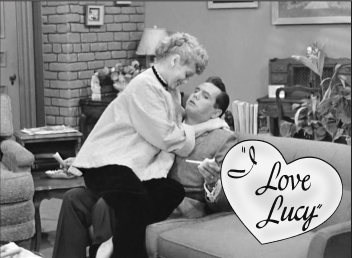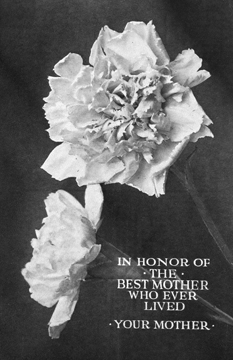Mothers and May Days
There is your truth, my truth, and what we agree together to accept as truth. 1960’s era US diplomat George Ball said, “Nostalgia is a seductive liar.” J.M. Barrie, author of Peter Pan wrote, “God gave us memory so we might have roses in December.”
Psychoanalyst Carl Jung suggested, “The ability to ask questions is the greatest resource in learning the truth.” Not always. Sometimes when people talk, words get in the way. Words matter. Non-verbal communication matters. Vibrations matter. Wholeness often gets lost amid euphemisms, nomenclature and bad metaphor.
In 1952, a rabbi, a priest, and a minister walked into CBS studios to  critique and approve episodes of “I Love Lucy” in which, for the first time on network TV, the seemingly controversial condition of pregnancy would be depicted for a prime time audience. Initially, Lucille Ball’s real life pregnancy via real life husband Desi Arnaz threatened to derail a season of Lucille’s and Desi’s portrayals of the fictional Lucy and Ricky Ricardo. When CBS agreed to weave Lucille Ball’s pregnancy into “I Love Lucy’s” storyline, executives titled the initial episode, “Lucy is Enceinte.” “Enceinte” then and now is the French term for pregnant. In old French, enceinte meant “ungirded,” a term derived from Latin for “girded” and “fortified. While in the good old days of the 1950’s, TV censors found it unacceptable to describe a pregnancy as a pregnancy, Lucy was “expecting,” it was fine to broadcast Lucy swatting Ricky with a newspaper and to show Ricky turning Lucy over his knee, spanking her for some misbehavior, while she wailed. Whatever the couple’s antics, Ricky generally served up any just desserts, ungirding Lucy, so to speak.
critique and approve episodes of “I Love Lucy” in which, for the first time on network TV, the seemingly controversial condition of pregnancy would be depicted for a prime time audience. Initially, Lucille Ball’s real life pregnancy via real life husband Desi Arnaz threatened to derail a season of Lucille’s and Desi’s portrayals of the fictional Lucy and Ricky Ricardo. When CBS agreed to weave Lucille Ball’s pregnancy into “I Love Lucy’s” storyline, executives titled the initial episode, “Lucy is Enceinte.” “Enceinte” then and now is the French term for pregnant. In old French, enceinte meant “ungirded,” a term derived from Latin for “girded” and “fortified. While in the good old days of the 1950’s, TV censors found it unacceptable to describe a pregnancy as a pregnancy, Lucy was “expecting,” it was fine to broadcast Lucy swatting Ricky with a newspaper and to show Ricky turning Lucy over his knee, spanking her for some misbehavior, while she wailed. Whatever the couple’s antics, Ricky generally served up any just desserts, ungirding Lucy, so to speak.
 We speak more openly about gender issues these days, but how we talk about body parts and reproduction still flows from old taboos surrounding our biological natures.
We speak more openly about gender issues these days, but how we talk about body parts and reproduction still flows from old taboos surrounding our biological natures.
On the April 20th edition of NPR’s Diane Rehm Show, psychologist Peggy Orenstein stated that society still doesn’t teach little girls good things about their bodies. Orenstein suggests that parents will tell a little boy about his “pee-pee,” but with little girls, parents omit naming body parts in the “navel to knee” area. She suggests our culture delays biology based information for girls, generally focusing on avoiding unwanted pregnancy.
The post WWII happy days are days remembered by how things appeared rather than by things were. I first learned, not at home, that girls should keep their eyes to themselves because when girls and boys looked at each other with interest, sometimes the boys “got the girls fat.” A nascent second grade feminist and humanist, I questioned inequity of the system. My mentor told me it was a man’s world and to stop being stupid, disproving universal acceptance of the platitude that the only stupid question is the question not asked.
Gradually, I learned there was some feminine hierarchy based on purity, a term employed to describe female role models and soap: “Ivory Soap is so pure it floats!”
Nostalgia!
Everyone and everything are products of what went before. Product names change.
The better known May Day celebrates the return of Spring. Pagan southern Europeans honored Flora, goddess of flowers. In northern Europe May Day celebrations revolved round maypoles, flower baskets and bonfires. As Christendom spread northwestward via Rome from the Eastern Mediterranean, May Processions and May Altars honoring the Virgin Mary replaced May Day celebrations.
The term May Day also refers to the international labor movement observance celebrated in many nations but not here. This particular May Day, also known as International Workers Day, originated in the USA to commemorate the May 4, 1886 Chicago Haymarket Massacre, a massacre arising out of US workers’ demands for an eight- hour work day. In 1894, President Grover Cleveland established our current September Labor Day.
“Mother’s Day,” May’s most celebrated observance, originated with a woman named Anna Jarvis who held a private memorial for her mother in 1908 at St. Andrew’s Methodist Church in Grafton, West Virginia. Anna Jarvis’s memorial morphed into a national movement. In 1914, President Woodrow Wilson signed a proclamation designating the second Sunday in May as Mother’s Day. Anna Jarvis came to disapprove of Mother’s Day’s commercialization. In 1925, a group known as the American War Mothers sold carnations to raise funds. Jarvis used and associated carnations with her original memorial. Resentful, Jarvis protested at the convention and carnation sale. She was arrested for disturbing the peace
woman named Anna Jarvis who held a private memorial for her mother in 1908 at St. Andrew’s Methodist Church in Grafton, West Virginia. Anna Jarvis’s memorial morphed into a national movement. In 1914, President Woodrow Wilson signed a proclamation designating the second Sunday in May as Mother’s Day. Anna Jarvis came to disapprove of Mother’s Day’s commercialization. In 1925, a group known as the American War Mothers sold carnations to raise funds. Jarvis used and associated carnations with her original memorial. Resentful, Jarvis protested at the convention and carnation sale. She was arrested for disturbing the peace
In spite of its founder, Mother’s Day lives on.
In spite of anyone or everyone’s protests and resistance, things were what they were then, and are what they are now.
Most survive.










